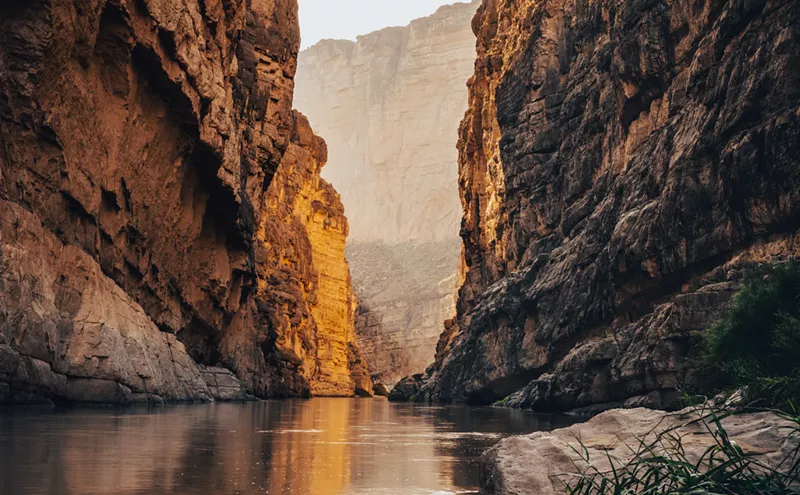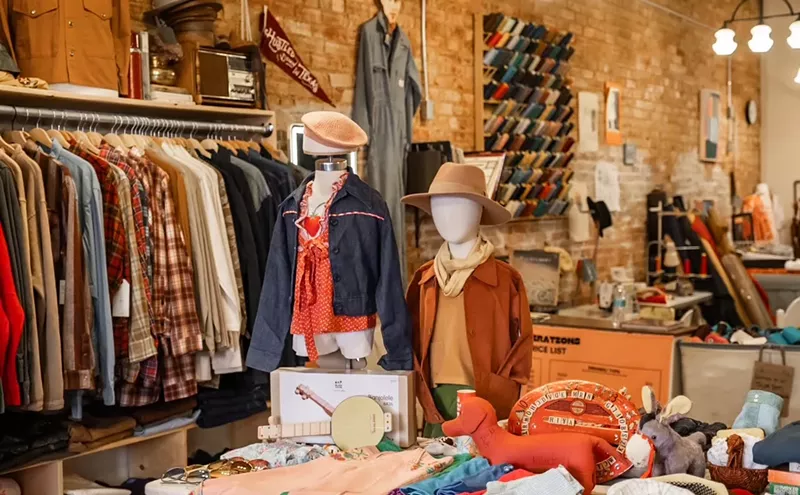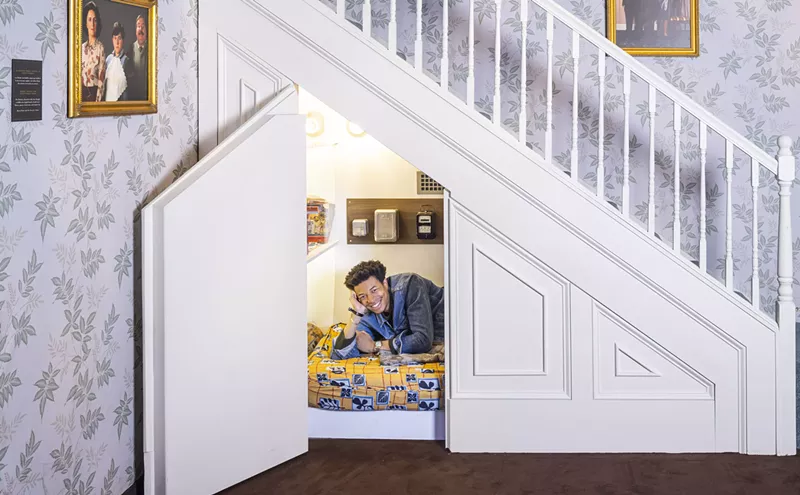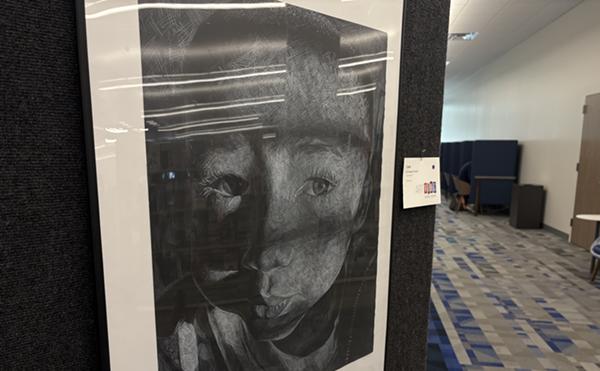In September 1911, a man boarded a plane in Sheepshead Bay, New York. Three months and 70 stops later he landed in Long Beach, California, having completed the world's first transcontinental flight. If you can't think of his name, you're not alone. Neither can 95 percent of pilots, say David Grabowski and Stephen Tonti, who are in the process of recreating Rodgers' historic flight and documenting it for a movie, Tilt Shift.
Dallas is just about the halfway point in their journey, and last week they were stuck here, waiting for conditions to improve so they could take off from Dallas Executive Airport. "I took off from the Dallas airport this morning and immediately turned and landed because the air was so unstable," Grabowski says. It's not the first delay they've encountered, but it has been the longest.
Grabowski and Tonti, who is a filmmaker from Dallas, met while in college at Carnegie Mellon in Pittsburgh. "We met on the set of a hoaky web series, Zombie College Musical," Tonti says. They continued to work on projects together throughout school and even lived together post college when they both ended up in New York City.
In New York, Grabowski was working as a musician creating scores. But the work wasn't that satisfying. "I was kind of depressed from the everyday of my job," he says. He dreamed of going on a big adventure, something he could one day tell his kid about. While turning around various ideas of what this adventure might be in his head, he considered a long backpacking trip or riding a bike across the country.
Then, while searching for bikes online, he accidentally typed a T instead of a B and discovered the "trike," a plane that's basically a glider with an instrument panel and an engine. Grabowski fell in love with the open cockpit and decided he'd found his primary adventuring tool. "I couldn't think of anything crazier," Grabowski says.
Grabowski called Tonti with the idea to acquire two separate trikes, one for each of them to fly, and film a full-length documentary feature about their exploits, which Grabowski would score. Tonti was enthused about the plan.
But the plan changed considerably once the pair began conducting research and spoke with Brian Milton, a British pilot who is the only person to circumnavigate the globe on a trike. He told them they were biting off more than they could chew, and suggested they downscale to one plane. He also offered a potential course for their flight.
"He suggested we look up this guy Cal Rodgers," Tonti says. "We said, 'Cal who?' and he made a joke about Americans not knowing their own history."
Rodgers' flight had come about after the publisher Hearst offered a $50,000 prize to the first person to complete a transcontinental flight. The plan had only been invented a decade earlier and to get a pilot's license Rodgers had to train at the Wright brothers' house. "The Wright brothers told him not to do it," Grabowski says. "You had to get a certificate from them. They were the only people giving people pilot's certificates."
At the time of his journey, Rodgers was a big deal. "The public eye was hugely affixed on him throughout his entire flight," Grabowski says. "They wanted to see someone defy the odds. It's an achievement that was wrongly forgotten."
Grabowski and Tonti decided they liked Milton's suggestion, and they figured it would be a piece of cake. "We thought at the time it would be a three- or four-month endeavor — the licenses, acquiring the vehicles," Grabowski says. "It was beyond absurd. We were adventure-spirited, naive young boys. Over the last three years we’ve grown to men who understand the seriousness of flying."
The flight itself ended up taking years to plan, due to other work commitments that cropped up for both Grabowski and Tonti. The project went through some dark times where it seemed unclear that it would happen at all. But in March 2016, Grabowski finally got his pilot's license.
With their sponsorship with aircraft manufacturer North Wing about to run out — it had already been extended twice — Grabowski told Tonti it was now or never. "I said, 'Hell yeah. I’m still in,'" Tonti says. After a successful crowdfunding campaign they took off on Sept. 13 of this year from Los Angeles, in a reversal of Rodgers' route.
Before Grabowski trained for his pilot's license, he had never been on anything but a commercial plane. He was even afraid of heights. To learn to fly he was forced to think of the world differently than he had in his artistic practices. "It taught me to trust myself in a huge way, become more analytical," Grabowski says.
More than a pure adrenaline-pumping adventure, his journey across the country with Tonti — who sometimes flies with him, sometimes follows behind in a camper van — has also made him feel connected to Rodgers and given him an appreciation for what it means to be an American hero.
"I had to fight hard to do this," Grabowski says. "I think that’s what the heart of the Cal Rodgers story is. What it means to not give up and see something through to the end." Grabowski believes that's the kind of story and attitude Americans could benefit from being reminded of.
"It seems the United States doesn’t have an awful lot to nationally be proud of," he says. "There aren’t that many occasions we as a country can celebrate nationally and uniformly. NASA is still alive and kicking but walk down the streets in Dallas and ask anyone you see what the most recent achievement is and I doubt they'll be able to tell you."
Grabowski's and Tonti's first priority is making it to New York safely. But once that's done they hope to begin the immense task of editing the hundreds of hours of footage they've taken over the years and have the film ready to submit to festivals in 2018, beginning with Sundance in January.
To follow Grabowski's and Tonti's journey, visit their website and Instagram (@tiltshiftdoc).

Audio By Carbonatix
[
{
"name": "GPT - Billboard - Slot Inline - Content - Labeled - No Desktop",
"component": "21721571",
"insertPoint": "2",
"requiredCountToDisplay": "2"
},{
"name": "STN Player - Float - Mobile Only ",
"component": "21861991",
"insertPoint": "2",
"requiredCountToDisplay": "2"
},{
"name": "Editor Picks",
"component": "17105533",
"insertPoint": "4",
"requiredCountToDisplay": "1"
},{
"name": "Inline Links",
"component": "18349797",
"insertPoint": "8th",
"startingPoint": 8,
"requiredCountToDisplay": "7",
"maxInsertions": 25
},{
"name": "GPT - 2x Rectangles Desktop, Tower on Mobile - Labeled",
"component": "22608066",
"insertPoint": "8th",
"startingPoint": 8,
"requiredCountToDisplay": "7",
"maxInsertions": 25
},{
"name": "Inline Links",
"component": "18349797",
"insertPoint": "8th",
"startingPoint": 12,
"requiredCountToDisplay": "11",
"maxInsertions": 25
},{
"name": "GPT - Leaderboard to Tower - Slot Auto-select - Labeled",
"component": "17357520",
"insertPoint": "8th",
"startingPoint": 12,
"requiredCountToDisplay": "11",
"maxInsertions": 25
}
]











